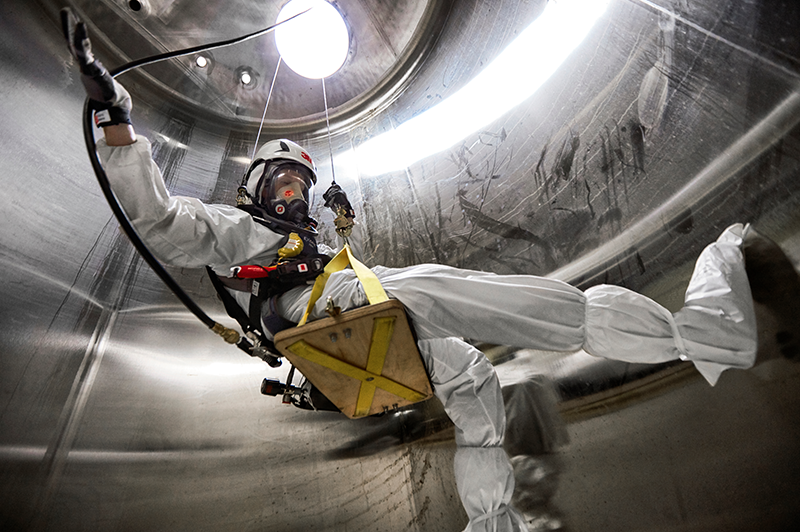
When it comes to working in confined spaces, such as basements, attics, tunnels, ducts, and pipes, you need to provide a certain amount of ventilation to prevent respiratory problems and other health issues. If oxygen levels get too low, you could put the health and safety of your employees at risk. The Occupational Safety and Health Administration (OSHA) defines confined spaces as, “[spaces and openings] large enough for workers to enter and perform certain jobs,” and having, “limited or restricted means for entry or exit,” and those, “not designed for continuous occupancy.”
Learn about ventilation requirements for confined spaces, so you can better protect your workers.
Ventilation Requirements for Confined Spaces
Ventilation is a way of making sure your employees have access to enough breathable air. Any obstruction to the flow of oxygen could impact the health of your employees in a matter of minutes or less. It may cause dizziness, shortness of breath, increased heart rate, headaches, or restlessness.
Under OSHA regulations, you must provide the following safety measures:
- Oxygen (O2) levels need to stay between 19.5% and 22%.
- Gases and flammable vapors must be kept below 10% of their lower explosive limit (LE)L.
- Potentially toxic materials must stay below their personal exposure limit (PEL) levels, or immediate danger to life and health (IDLH) levels if you’re using anything less than supplied air respirator protection.
Monitoring Your Workplace
You need to continuously monitor your workspace in order to find out if you need additional ventilation or if these levels become a hazard. You’ll need a quality gas monitor to test the air at all levels, including at the bottom, middle, and top of the space. Use a 4-gas monitor that can measure hydrogen sulfide, carbon monoxide, oxygen, and the lower explosive levels of combustible gases.
Test the air quality before putting your employees in the space to learn what kinds of precautions may be necessary. Once the air in the space has been cleared, you must continuously monitor the space in case these levels change while your employees are working on the task at hand.
To speed up your timeline, you can use equipment such as the Allegro 12-inch Axial Blower with Canister and Ducting to circulate the airflow. You can also use it to figure out how long it will take for the air in the space to clear out. Set up the blower in a clean air environment to make sure you’re forcing clean air into the space. Keep it away from generators, vehicles, motors, and anything else that may affect air quality.
Training Your Employees on the Dangers of Confined Spaces
According to OSHA, your employees have a right to the following:
- Working conditions that do not pose a risk of serious harm.
- Receive information and training (in a language and vocabulary the worker understands) about workplace hazards, methods to prevent them, and the OSHA standards that apply to their workplace.
- Review records of work-related injuries and illnesses.
- File a complaint asking OSHA to inspect their workplace if they believe there is a serious hazard or that their employer is not following OSHA's rules. OSHA will keep all identities confidential.
- Exercise their rights under the law without retaliation, including reporting an injury or raising health and safety concerns with their employer or OSHA. If a worker has been retaliated against for using their rights, they must file a complaint with OSHA as soon as possible, but no later than 30 days.
Be transparent about your safety practices and potential hazards to keep your employees safe. Encourage them to ask questions to get everyone on your team on the same page.
For more information on ventilation requirements for confined spaces, contact the workplace safety professionals at PK Safety. We can help you find all the workplace monitoring and safety equipment you need to comply with these regulations.
Related Searches
Gas Detection Resources, Honeywell BW Ultra 5-Gas Detector Hu-X1W1H1M1, GX-3R Four Gas Monitor, RAE Portable Benzene Multi-Gas Monitor
